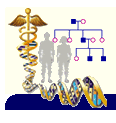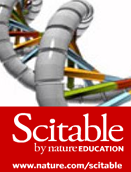De acuerdo con Sheldon et al (1997) los beneficios genéticos de la elección de pareja se pueden predecir por el tamaño de un carácter sexual secundario, y por lo tanto proporcionan apoyo directo a modelos de indicadores de la selección sexual.
De acuerdo con Qvarnstrom, (1999): "The strong effect of natal environmental condition on the estimated heritability of forehead badge size suggests that the potential genetic benefit from mate choice vary according to environmental conditions (e.g., the benefit is reduced during unfavorable rearing conditions). Because sons reared during poor conditions have probably experienced a natal environment different from that experienced by their fathers, the low heritability estimates obtained under poor conditions seem to be caused by low additive genetic variation expressed in such environments and/or alow genetic correlation between the expression of the trait in the two different environments (i.e., good vs. bad). Both of these explanations imply the presence of genotype-by-environment interactions. If such interactions frequently affect the expression of secondary sexual characters, this may offer an explanation of the high heritabilites sometimes reported for such traits, despite their exposure to long-term directional selection".
Con base en la lectura de los artículos que se mencionan a continuación podrías contestar a esta pregunta o tal vez sólo leyendo el párrafo mencionado en clase: ¿Es este un caso de selección sexual o de efecto materno?
Mousseau, T. A., & Fox, C. W. (1998). The adaptive significance of maternal effects. Trends in Ecology & Evolution, 13(10), 403-407.
Qvarnstrom, A. (1999). Genotype-by-environment interactions in the determination of the size of a secondary sexual character in the collared flycatcher (Ficedula albicollis). Evolution, 1564-1572.









%202.37.24%E2%80%AFp.m..png)

.png)

0 comentarios:
Publicar un comentario